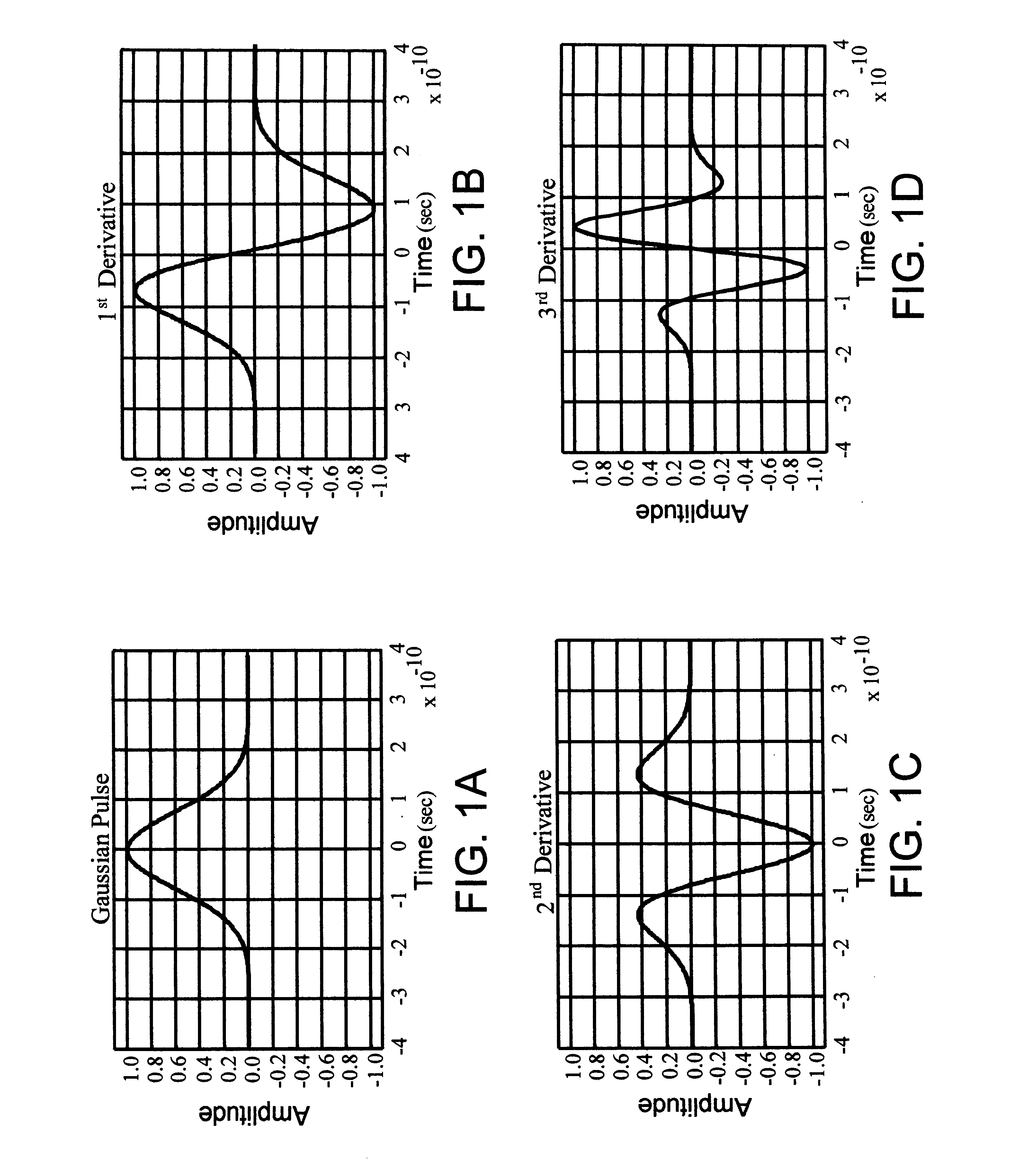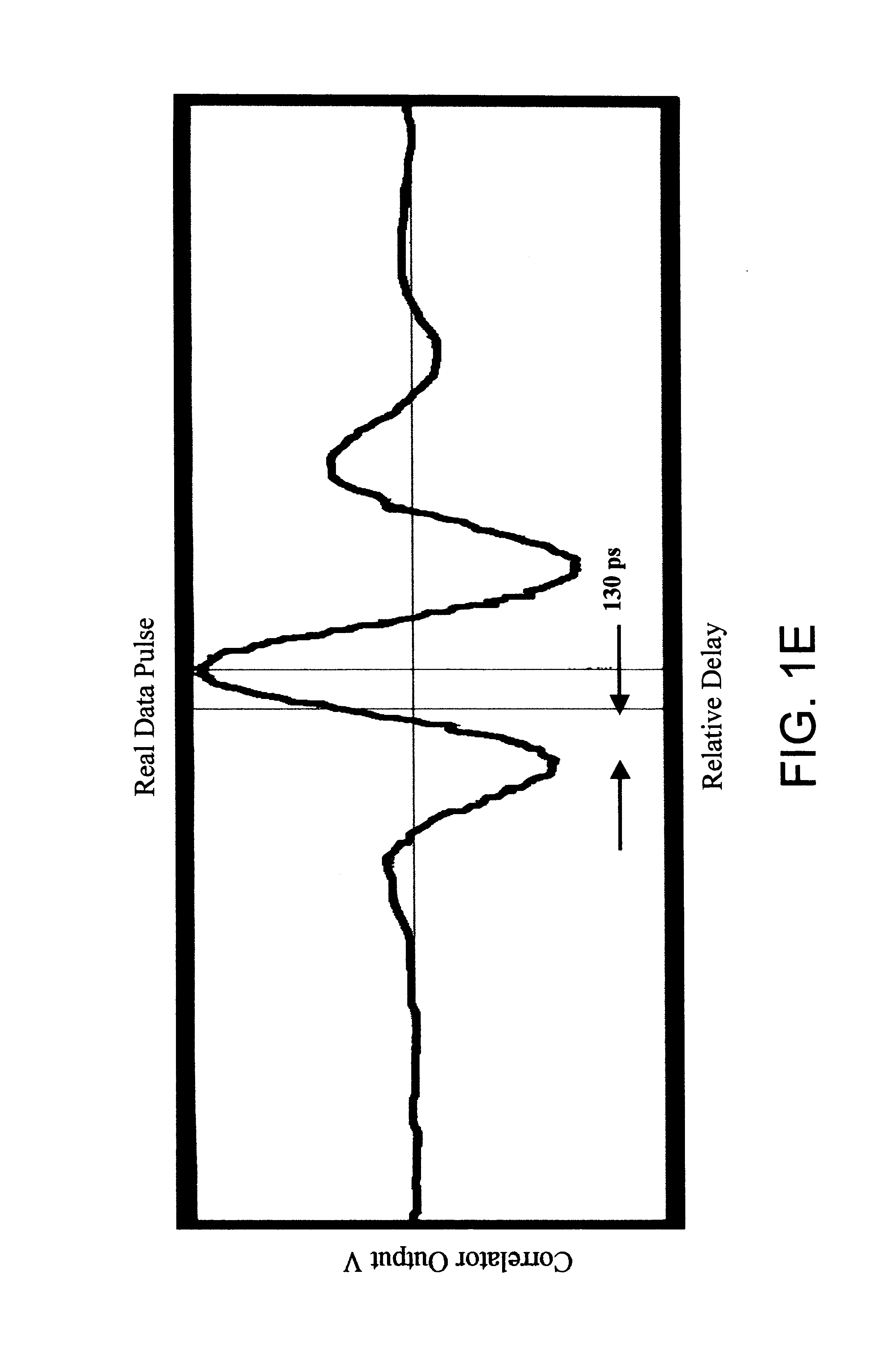System and method for detecting an intruder using impulse radio technology
a technology of impulse radio and intruder detection, applied in the security field, can solve the problems of inability to detect an intruder by the intrusion detection system, easy jamming, hacked, spoofed or otherwise defeated by intruders, and is essentially spoofproof or very difficult for an intruder to defea
- Summary
- Abstract
- Description
- Claims
- Application Information
AI Technical Summary
Problems solved by technology
Method used
Image
Examples
first embodiment
Referring to FIG. 14, there is a diagram illustrating the intrusion detection system 1100 in accordance with the present invention. The intrusion detection system 1100 includes a transmitting impulse radio unit 1000 (described above as the UWB transmitter 1000) and a receiving impulse radio unit 900 (described above as the UWB scanning receiver 900). The transmitting impulse radio unit 1000 transmits an impulse radio signal 1402 having a known pseudorandom sequence of pulses that look like a series of Gaussian waveforms (see FIG. 1).
Initially, the impulse radio signal 1402 is transmitted within and through a protection zone 1104 that does not have an intruder 1102. The receiving impulse radio unit 900 receives the impulse radio signal 1402 and generates a first waveform 1502 (an exemplary first waveform is shown in FIG. 15a). The first waveform 1502 is a time domain representation of the actual distortion of the transmitted Gaussian waveform after being filtered by the environment a...
second embodiment
At step 1610, if the intruder 1102 is determined to be in the protection zone 1104, the processor 1408 could then calculate the difference "d" between the direct path between the transmitter 1000 and receiver 900 and the indirect path 1402 by knowing the elapsed time "t" between the initial wavefront 1506 and the multipath reflection part 1508 of the second waveform 1504 (see FIG. 15b). For instance, the distance "d" can be calculated to be 0.984 feet for each nanosecond in the elapsed time "t" between the initial wavefront 1506 and the multipath reflection part 1508 of the second waveform 1504 (see FIG. 15b). In this embodiment, the intruder 1102 could be in one of many places indicated by the ellipse shown in FIG. 14 (shown are two possible positions of the intruder 1102). Reference is made to the intrusion detection system 1100' which can determine the real location of the intruder 1102.
At step 1612, the receiving impulse radio unit 900 sounds an alarm and / or informs remote secur...
third embodiment
Again it should be understood that there may be many items (e.g., walls, trees, furniture . . . ) within the protection zone 1104' that could cause a multipath reflection part in the first waveform 1502a', 1502b' and 1502c' and the second waveform 1504a', 1504b' and 1504c' but it is the difference between the two waveforms that indicates the presence of one or more intruders 1102'. Moreover, it should be noted that the shape of the protection zone 1104' in this embodiment is basically arbitrary as compared to the specially designed shape of the protection zone 1104" the
After calculating the distances "d1", "d2" and "d3" which are the differences between the direct paths 1402' and indirect paths 1406a', 1406b' and 1406c', each receiving impulse radio unit 900a', 900b' and 900c' and transmitting unit 1000' forwards their calculated distance "d1", "d2" or "d3" to the transmitting impulse radio unit 1000'. Thereafter, the transmitting impulse radio unit 1000' has a processor 1802' that ...
PUM
 Login to View More
Login to View More Abstract
Description
Claims
Application Information
 Login to View More
Login to View More - R&D
- Intellectual Property
- Life Sciences
- Materials
- Tech Scout
- Unparalleled Data Quality
- Higher Quality Content
- 60% Fewer Hallucinations
Browse by: Latest US Patents, China's latest patents, Technical Efficacy Thesaurus, Application Domain, Technology Topic, Popular Technical Reports.
© 2025 PatSnap. All rights reserved.Legal|Privacy policy|Modern Slavery Act Transparency Statement|Sitemap|About US| Contact US: help@patsnap.com



